

RS-232, RS-422, and RS-485 are all standards for serial data interfaces; Communication issues are similar to traffic issues, with various situations such as high speed, low speed, congestion, and interruptions.
If we compare serial communication to traffic, UART is like a station, and a frame of data is like a car. Cars on the road must obey traffic rules. In the city, speed limits are generally 30 or 40, while highways can go up to 120. The type of road and speed limits depend on the protocol specifications.Common serial port protocols include RS-232, RS-422, and RS-485. What are the subtle differences between them? Let’s explore together.
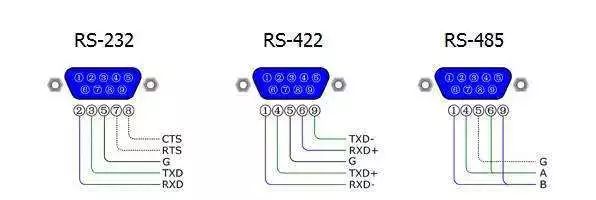
One of the communication interfaces on personal computers, defined by the Electronic Industries Association as an asynchronous transmission standard interface. Typically, the RS-232 interface appears in the form of 9 pins (DB-9) or 25 pins (DB-25), and a personal computer usually has two sets of RS-232 interfaces, referred to as COM1 and COM2.
The RS232 electrical interface is divided into DB9 and DB25, defined as shown in the following diagram:
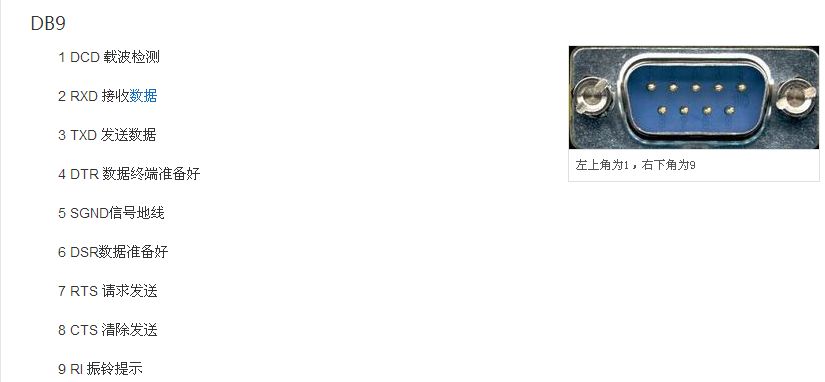
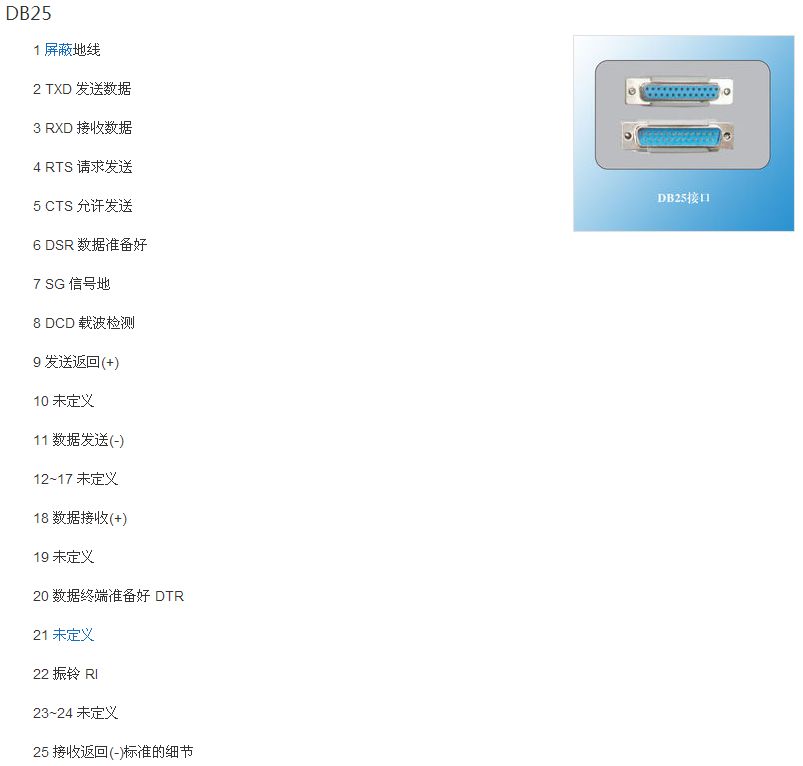

In fact, most of the time, not all interfaces need to be soldered; the simplified diagram is as follows:
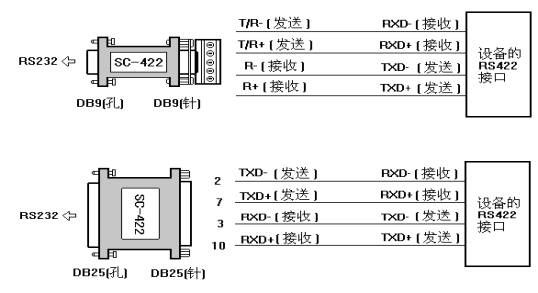
The full name of the RS-422 standard is “Electrical Characteristics of Balanced Voltage Digital Interface Circuits”; it defines the characteristics of the interface circuit. In fact, there is also a signal ground wire, making a total of five wires.
Due to the receiver’s high input impedance and the transmitter’s stronger driving capability compared to RS232, multiple receiving nodes can be connected on the same transmission line, with a maximum of 10 nodes.
One master device and the rest as slave devices; slave devices cannot communicate with each other, so RS-422 supports point-to-multiple bidirectional communication. The receiver’s input impedance is 4k, thus the maximum load capacity of the transmitter is 10×4k+100Ω (termination resistance).


In fact, most of the time, not all interfaces need to be soldered; the simplified diagram is as follows:

RS-485, also known as TIA-485-A, ANSI/TIA/EIA-485, or TIA/EIA-485.
RS485 is a standard that defines the electrical characteristics of drivers and receivers in a balanced digital multipoint system, defined by the Telecommunications Industry Association and the Electronic Industries Alliance.
Networks using this standard can effectively transmit signals over long distances and in environments with high electronic noise. RS-485 enables the configuration of inexpensive local networks and multi-branch communication links.
RS485 has two-wired and four-wired connections, where the four-wired connection only allows point-to-point communication, which is rarely used now; the two-wired connection is more commonly used, which has a bus topology allowing up to 32 nodes on the same bus.
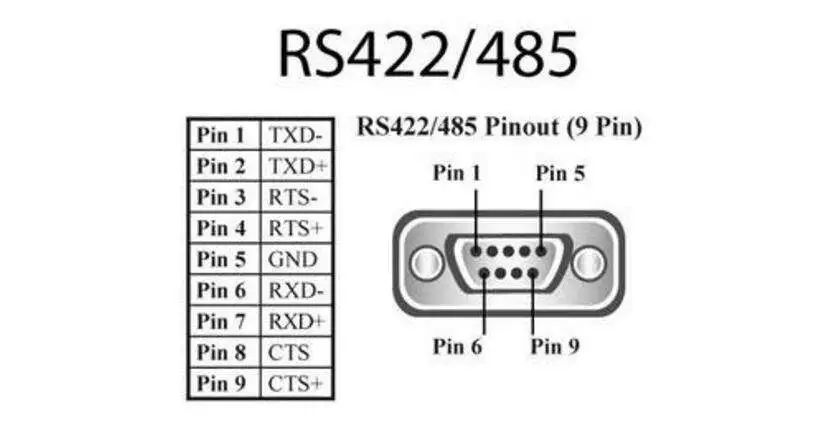
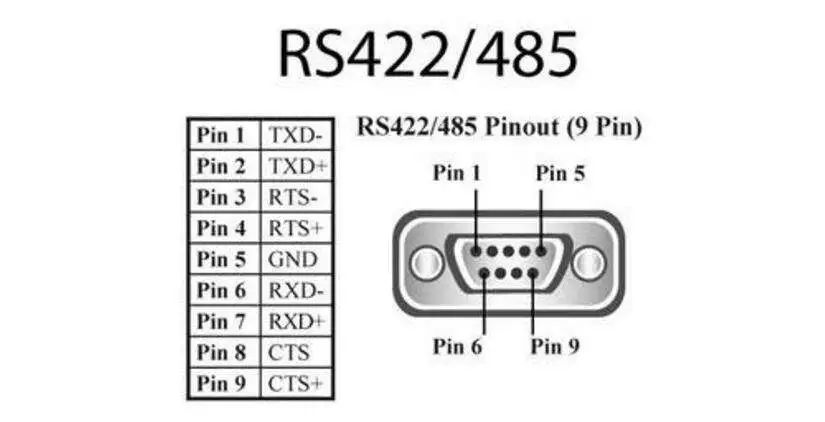
All are serial communication protocols, but used in different applications
RS232 – 3-wire full duplex, point-to-point communication, transmission distance within 25 meters;
RS485 – 2-wire half duplex, point-to-multiple master-slave communication, transmission distance can reach over 1200 meters;
RS422 – 4-wire full duplex, master-slave communication, transmission distance can reach over 1200 meters.
Complete question bank for the 2022 junior electrician exam (including answers)
3 essential tools for electricians, accessible with one click on WeChat!
[Collection] The “path” for a ten-year veteran electrician, the secret to earning over 10,000 a month!
Which of the five major electrical drawing software (CAD, Eplan, CADe_simu…) do you choose?
The latest electrical version of CAD drawing software, with a super detailed installation tutorial!
The latest electrical drawing software EPLAN, with a super detailed installation tutorial!
Common issues for beginners using S7-200 SMART programming software (with download link)
Comprehensive electrical calculation EXCEL sheets, automatically generated! No need to ask for electrical calculations!
Bluetooth headsets, electrician/PLC introductory books are being given away? Come and claim your electrical gifts!
Basic skills in PLC programming: Ladder diagrams and control circuits (including 1164 practical cases of Mitsubishi PLC)
Still can’t understand electrical diagrams? Basic electrical drawing skills, simulation software available for quick hands-on experience!
12 free electrician video courses, 10GB software/eBook materials, and 30 days of free electrician live courses are being given away!
